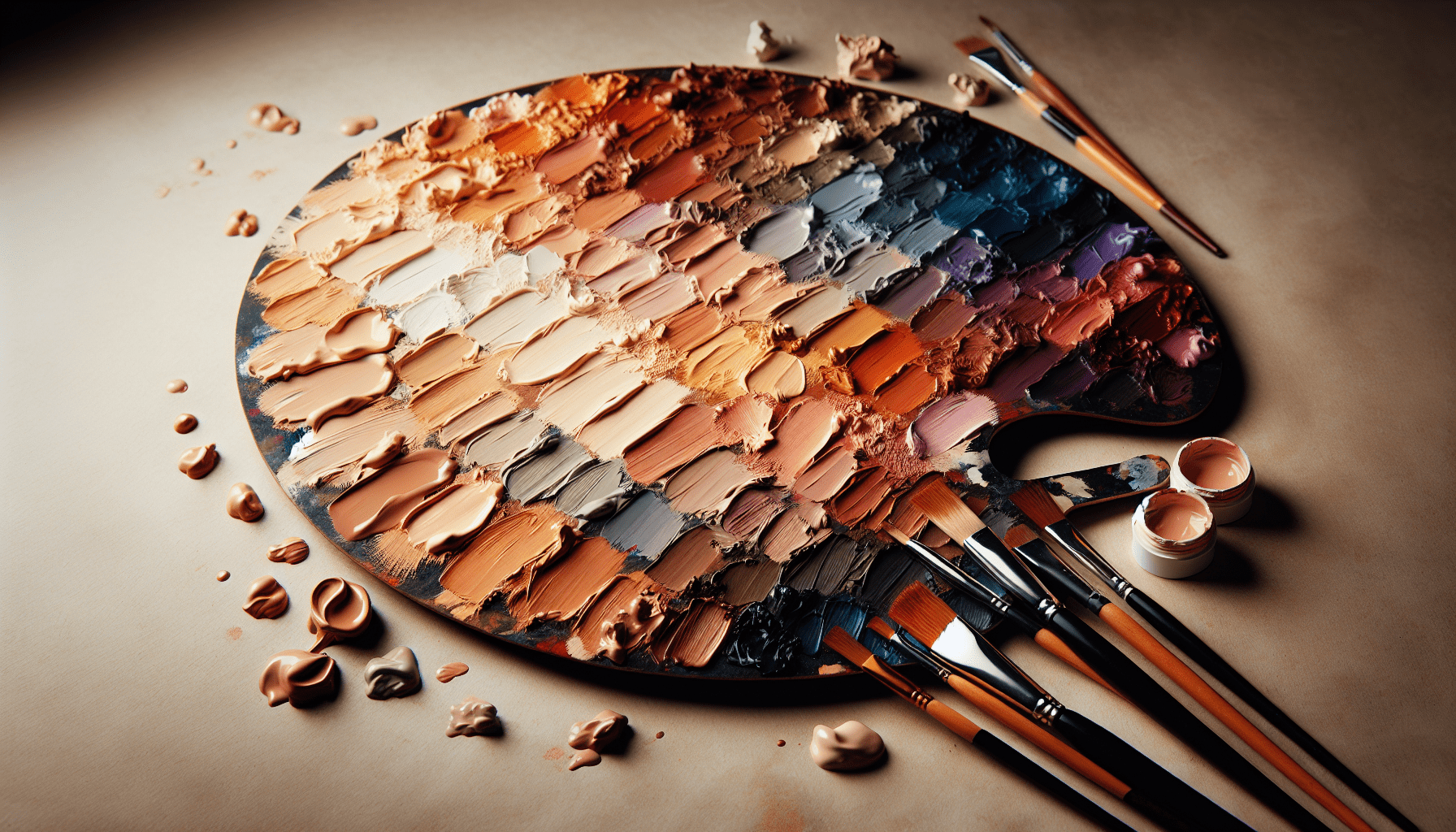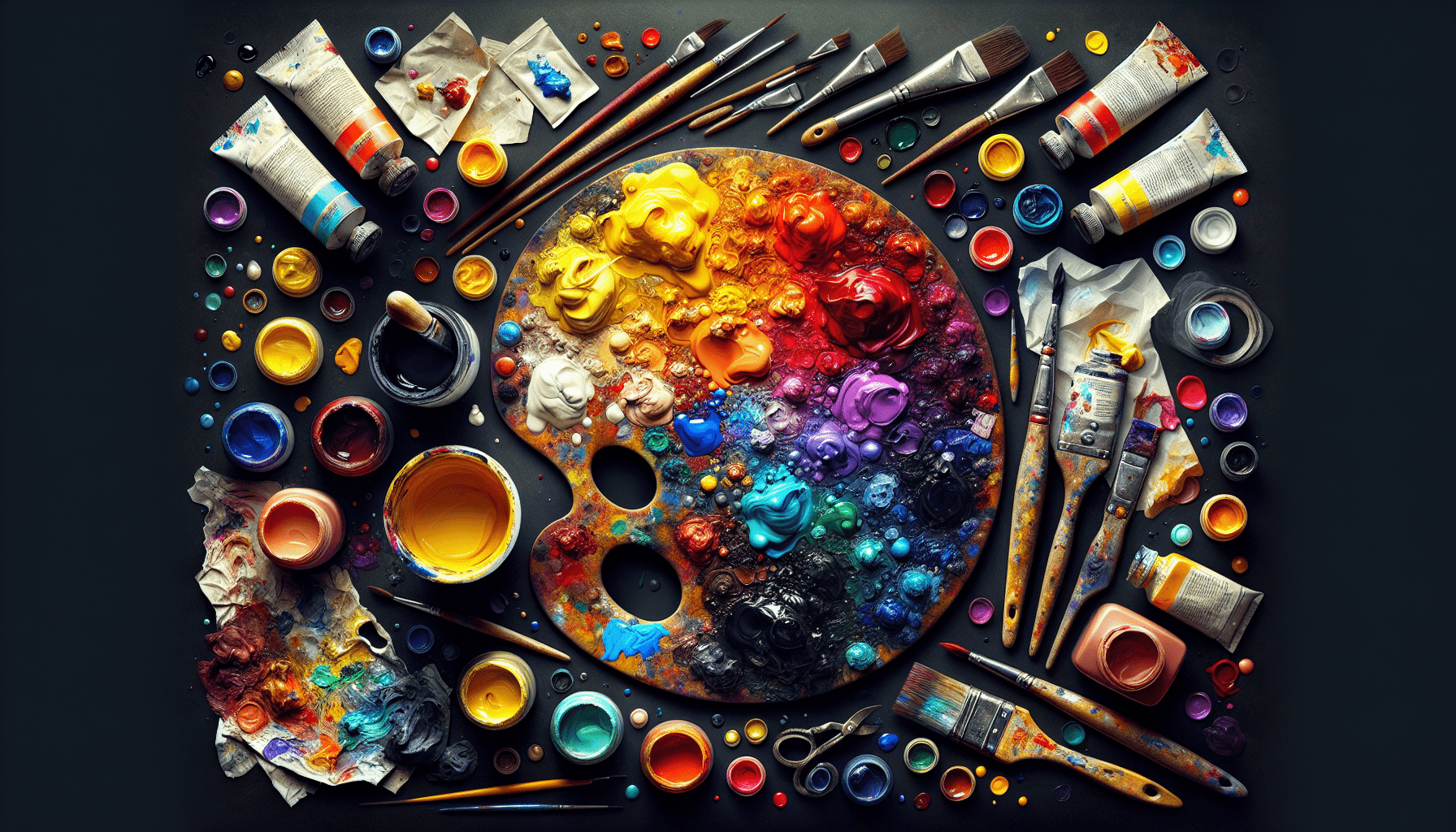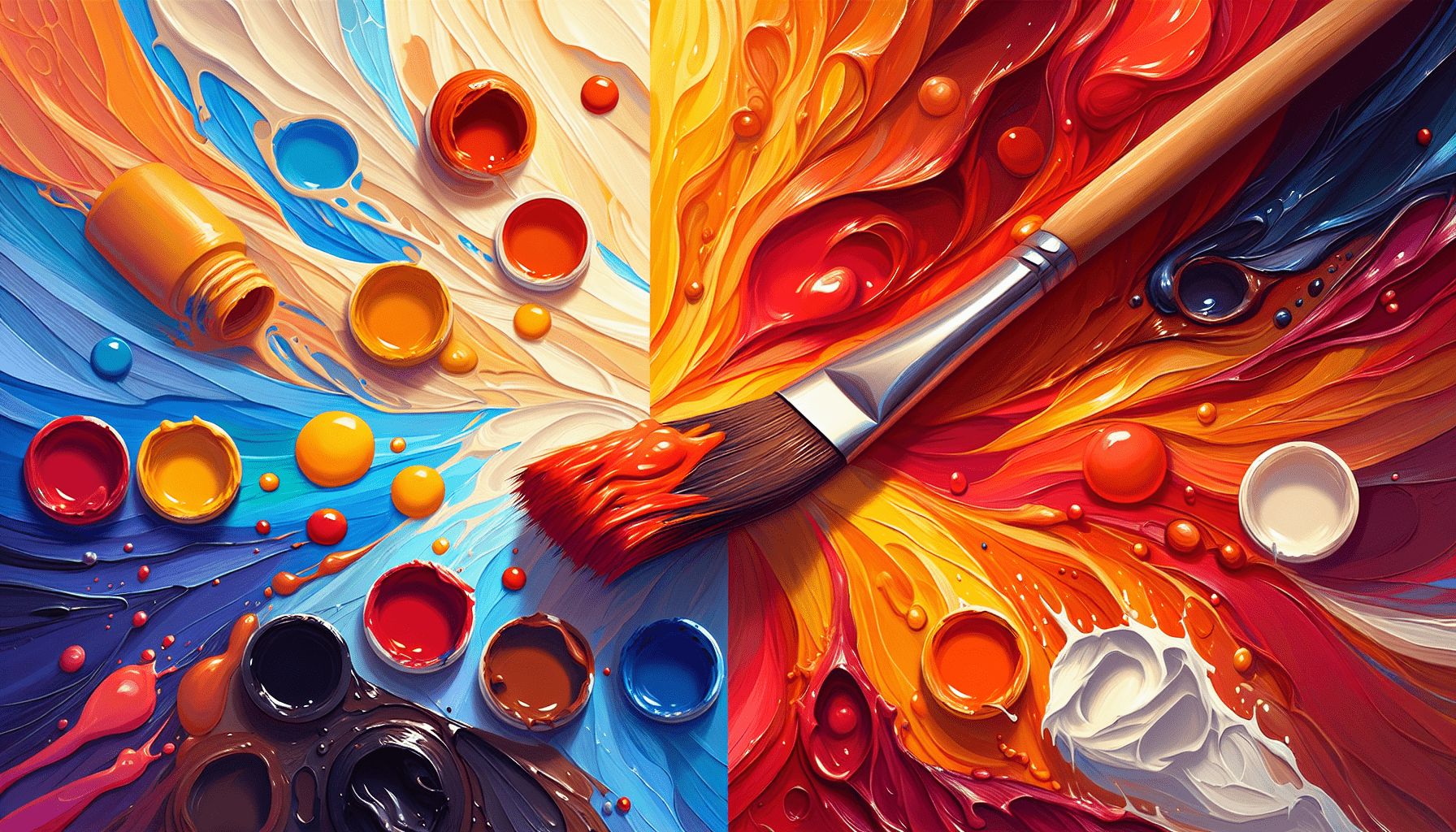Have you ever wondered how to make the most out of poster paint for your creative projects? Whether you are a teacher, a parent, an artist, or simply someone looking to explore the versatility of poster paint, mastering its use can be incredibly rewarding. This article will guide you through the essentials of using poster paint, from choosing the right materials to mastering various techniques.
Understanding Poster Paint
Poster paint, also known as tempera paint, is a water-based paint known for its bright colors and versatility. It is popular among children and artists because it is easy to work with, washable, and non-toxic. Understanding the fundamental properties of poster paint will help you achieve the best results in your projects.
What is Poster Paint?
Poster paint is a water-soluble paint that typically comes in bottles, jars, or tubes. It is made from pigments suspended in a binder that helps maintain the paint’s uniformity and smooth application. Unlike other paints, poster paint dries quickly and provides vibrant, opaque colors.
Advantages of Using Poster Paint
Poster paint offers several advantages, making it a preferred choice for various artistic endeavors. Here are some key benefits:
- Ease of Use: Poster paint is user-friendly due to its smooth consistency and quick-drying properties.
- Vibrant Colors: The pigments in poster paint produce bright and eye-catching colors.
- Non-Toxic: Most poster paints are non-toxic, making them safe for children.
- Cost-Effective: Generally, poster paint is more affordable compared to other types of paints.
Choosing Your Materials
Selecting the right materials is crucial for achieving the desired results when using poster paint. This section will outline the essential tools and surfaces needed for your painting project.
Types of Poster Paint
There are various types of poster paints available, each offering unique characteristics. The most common types include:
| Type | Description |
|---|---|
| Liquid Poster Paint | Comes in bottles and is ready to use. Provides consistent color and is easy to mix. |
| Powder Poster Paint | Requires mixing with water. Offers greater control over consistency and color intensity. |
| Solid Poster Paint Sticks | Convenient for quick applications and easy to use for children. |
Surface Selection
Choosing the right surface for your poster paint project can significantly impact the final result. Here are some options:
- Paper: Heavyweight paper, such as watercolor paper or cardstock, is ideal for poster paint.
- Canvas: Pre-primed canvas provides a sturdy surface that absorbs paint well.
- Wood: Smooth, untreated wood panels can offer a unique texture for your paintings.
- Cardboard: A cost-effective option suitable for large projects and kids’ crafts.
Brushes and Other Tools
The right tools can make a significant difference when working with poster paint. Consider the following:
- Brushes: Various brush types (round, flat, fan) allow for diverse painting techniques.
- Sponges: Great for creating texture and broad strokes.
- Palette: Essential for mixing colors and keeping your workspace organized.
- Water Containers: Needed for cleaning brushes and diluting paint.
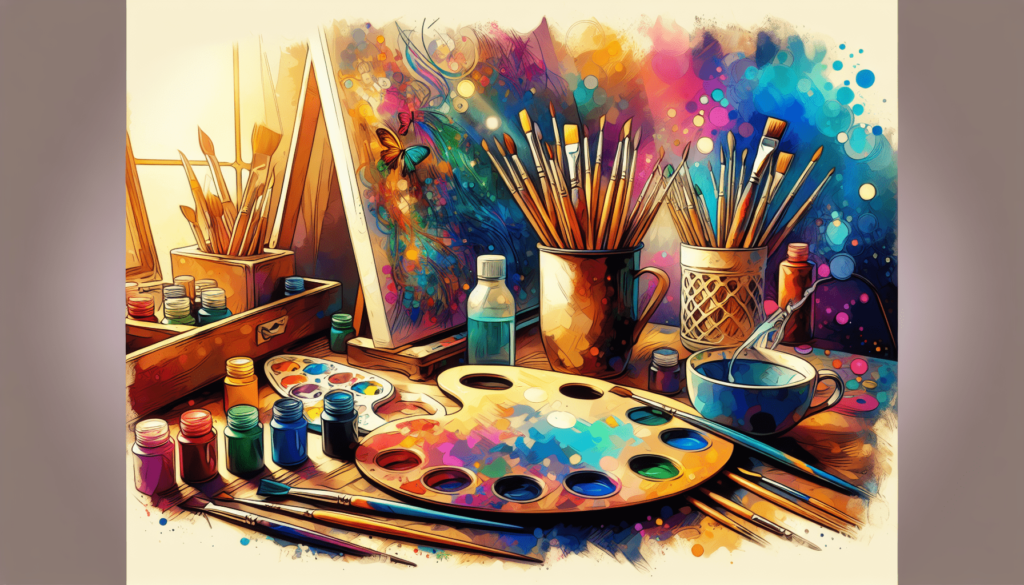
Preparing Your Workspace
Having an organized and well-prepared workspace ensures that your painting process is smooth and enjoyable. Proper preparation includes setting up your space, gathering your materials, and protecting your area from spills and splatters.
Setting Up Your Space
A clutter-free and comfortable workspace is essential for any creative endeavor. Here are some tips:
- Lighting: Ensure your workspace is well-lit to accurately see colors and details.
- Ventilation: Proper ventilation is important, especially if you are working in an enclosed space.
- Work Surface: Use a sturdy table or easel to support your painting surface.
Protecting Your Area
Poster paint can be messy, so safeguarding your workspace is crucial. Consider these measures:
- Covering Surfaces: Use old newspapers, plastic sheets, or drop cloths to protect surfaces.
- Wear an Apron: Protect your clothing with an apron or old clothes.
- Keep Towels Handy: Have paper towels or rags nearby to quickly clean up any spills.
Mastering Basic Techniques
Learning basic painting techniques with poster paint will allow you to create diverse and engaging artworks. This section will cover fundamental techniques that are easy to master and can be adapted for various projects.
Color Mixing
Color mixing is a foundational skill in painting. By understanding how to mix colors, you can create an extensive palette from a limited set of primary colors.
- Primary Colors: Start with the basic primary colors—red, blue, and yellow.
- Secondary Colors: Mix two primary colors to create secondary colors (e.g., red + blue = purple).
- Tertiary Colors: Combine a primary color with a secondary color to create tertiary colors (e.g., blue + green = teal).
Layering
Layering is a technique used to build depth and richness in your artwork.
- Base Layer: Start with a base layer of paint, allowing it to dry completely.
- Subsequent Layers: Apply additional layers of paint, letting each layer dry before adding the next.
- Details: Add finer details on the topmost layers for a refined finish.
Washes and Gradients
Washes and gradients add texture and dimension to your paintings.
- Washes: Dilute poster paint with water to create a translucent effect.
- Gradients: Blend two or more colors seamlessly by gradually changing the pressure and amount of paint on your brush.
Using Tools for Texture
Creating texture can give your artwork a unique and dynamic feel.
- Sponges: Dabbing a sponge in paint and applying it to your surface creates interesting textures.
- Palette Knives: Use a palette knife to apply thick layers of paint or scrape away sections for a textured look.
- Stamps and Stencils: These tools can add repetitive patterns and designs to your painting.
Blending
Blending is essential for creating smooth transitions between colors.
- Wet-on-Wet: Apply one color while the previous layer is still wet to blend them seamlessly.
- Dry Brushing: Use a dry brush with minimal paint to gently blend edges and soften transitions.
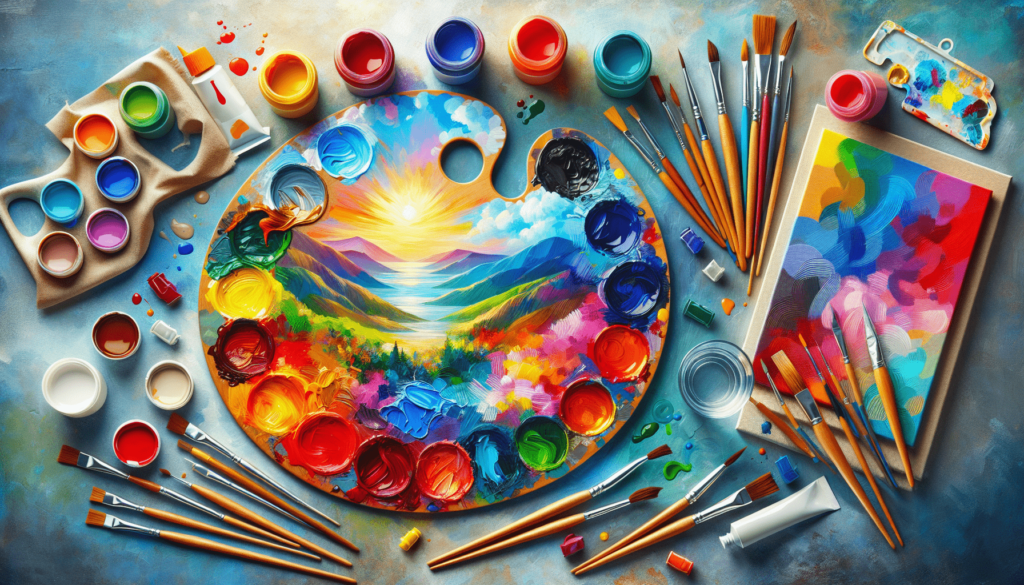
Advanced Techniques
Once you’ve mastered the basics, you can explore advanced techniques to elevate your artwork. This section delves into more complex methods that require practice but can bring your artistic skills to the next level.
Impasto
Impasto is a technique where paint is applied thickly, creating a textured, three-dimensional effect.
- Thick Application: Use a palette knife or a brush to apply thick layers of poster paint.
- Creating Dimension: Manipulate the paint to create peaks, ridges, and other textures.
- Emphasizing Light: The texture will catch light differently, adding a dynamic element to your artwork.
Glazing
Glazing involves applying thin, transparent layers of paint over a dried layer to create depth and rich color effects.
- Transparent Layers: Dilute paint with water to create a glaze.
- Layering: Apply multiple layers, allowing each to dry before adding the next.
- Building Color: Each glaze will subtly alter the colors below, creating a complex visual effect.
Sgraffito
Sgraffito is a technique where the top layer of paint is scratched away to reveal the layer beneath.
- Apply Base Layer: Paint a solid base layer and let it dry.
- Top Layer: Apply a contrasting color over the base layer.
- Scratch Away: Use a tool (e.g., a toothpick or palette knife) to scratch away sections of the top layer, revealing the color underneath.
Collage
Combining poster paint with collage techniques can result in intriguing mixed-media artwork.
- Background: Create a painted background with poster paint.
- Collage Elements: Add cut-out images, paper, or fabric pieces to your painting.
- Integrate: Use poster paint to blend and integrate the collage elements into the overall composition.
Common Challenges and Solutions
Using poster paint can present some challenges, especially for beginners. This section addresses common issues and provides practical solutions to help you overcome them.
Paint Thickening
Poster paint can sometimes thicken if left open for an extended period.
- Dilution: Add a small amount of water to the paint and mix thoroughly.
- Storage: Keep the paint containers tightly sealed when not in use.
Uneven Coverage
Achieving even coverage can be tricky, particularly with darker colors.
- Multiple Layers: Apply multiple thin layers rather than one thick layer.
- Brush Strokes: Use consistent brush strokes and avoid overworking the paint.
Cracking
Paint can crack if applied too thickly or if the surface is too rigid.
- Flexible Surfaces: Use flexible surfaces like canvas that can handle thicker paint applications.
- Moderation: Avoid applying excessively thick layers of paint.
Fading Colors
Poster paint may fade over time, especially when exposed to sunlight.
- UV Protection: Use a UV-protective varnish to seal your artwork.
- Indoor Display: Display your paintings away from direct sunlight.
Cleaning and Maintenance
Proper cleaning and maintenance of your tools and workspace are essential for extending the lifespan of your materials and ensuring a smooth painting process.
Cleaning Brushes
Clean brushes immediately after use to prevent paint from hardening.
- Rinse in Warm Water: Wash the brushes in warm water until the water runs clear.
- Soap and Water: Use mild soap to clean the bristles thoroughly.
- Shape and Dry: Reshape the bristles and let the brushes air dry.
Storing Paint
Properly storing your poster paint will prevent it from drying out and ensure its longevity.
- Tightly Sealed Containers: Always close the lids tightly to prevent air from entering.
- Cool, Dry Place: Store paint in a cool and dry location to maintain its consistency.
Maintaining Your Workspace
Keeping your workspace clean and organized will enhance your painting experience.
- Clean Surfaces: Wipe down tables and work surfaces after each session.
- Organize Tools: Store brushes, palettes, and other tools in designated areas.
- Disposal: Properly dispose of used materials like paper towels and rinse water.
Practical Applications
Poster paint can be used in various practical applications beyond traditional painting. This section explores some creative ways to utilize poster paint in your daily life and projects.
Educational Projects
Teachers and parents often use poster paint for educational projects that engage children and enhance their learning experience.
- Science Projects: Create colorful diagrams and models for science experiments.
- History Timelines: Use poster paint to make historical timelines visual and interactive.
- Art Lessons: Introduce children to basic art concepts through painting exercises.
Home Décor
Poster paint can be an inexpensive and fun way to create personalized home décor items.
- Wall Art: Create custom paintings to match your home’s aesthetic.
- Decorative Objects: Paint objects like vases, frames, or furniture for a personalized touch.
- Murals: Design and paint a mural on a feature wall in your home.
Crafts and DIY Projects
Poster paint is ideal for various crafts and DIY projects due to its versatility and quick-drying properties.
- Greeting Cards: Hand-paint greeting cards for personal and special occasions.
- Holiday Decorations: Create festive decorations for holidays like Christmas, Halloween, or Easter.
- Party Supplies: Design custom party decorations such as banners, signs, and tableware.
Artistic Exploration
For artists and hobbyists, poster paint offers a medium to explore new techniques and ideas.
- Sketchbooks: Use poster paint in sketchbooks for quick studies and experimentation.
- Mixed Media: Combine poster paint with other materials like ink, pencil, or collage.
- Collaborative Projects: Engage in collaborative art projects with friends or art communities.
Conclusion
Mastering the use of poster paint opens up a world of creative possibilities. From understanding its properties to choosing the right materials and techniques, this guide covers everything you need to create stunning artworks and practical projects. By addressing common challenges and offering tips for cleaning and maintenance, you can enjoy a smooth and rewarding painting experience. Whether you are a beginner or an experienced artist, poster paint is a versatile and accessible medium that can enhance your creative journey.
By following these guidelines, you will be well-equipped to explore the full potential of poster paint and bring your artistic visions to life.

